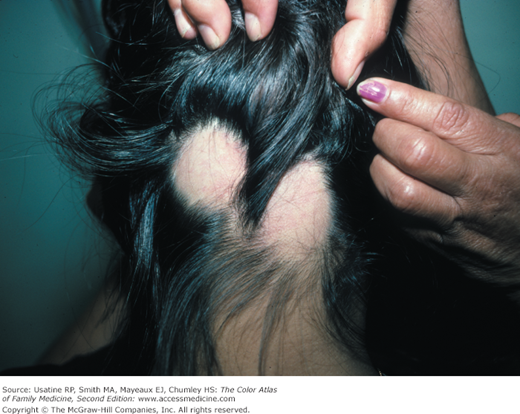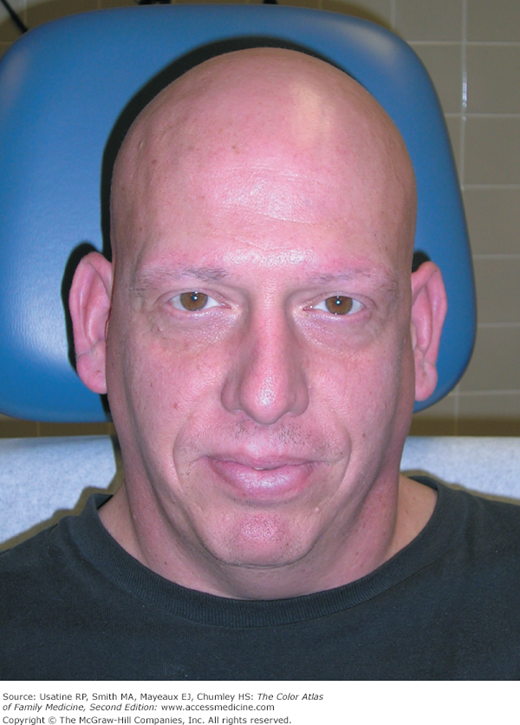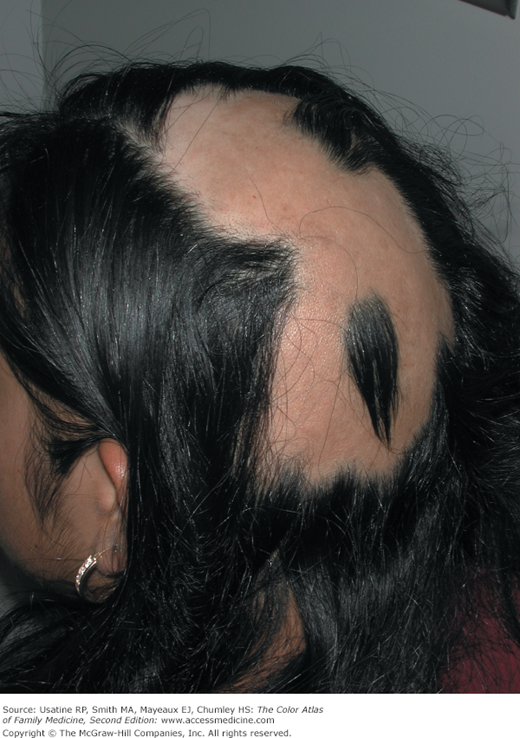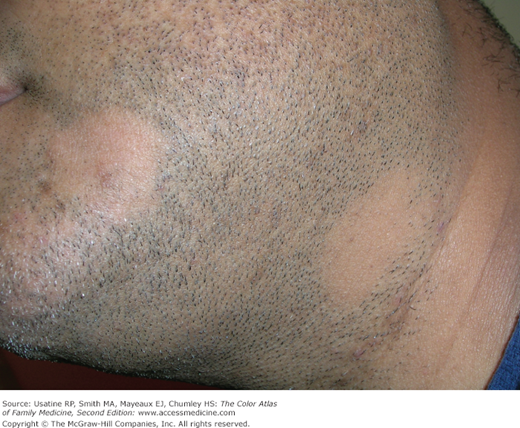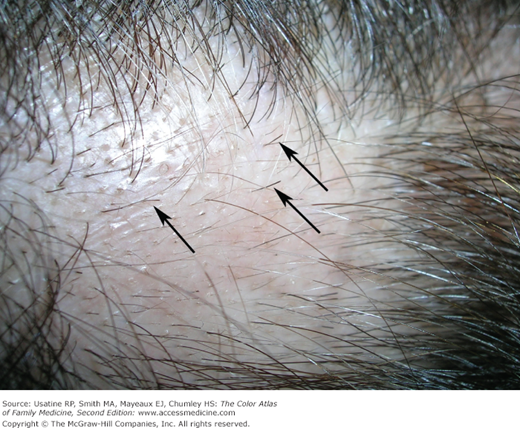Patient Story
An 8-year-old Hispanic girl was brought to her physician by her mother, who noticed two bald spots on the back of her daughter’s scalp while brushing her hair. The child had no itching or pain. The mother was more worried that her beautiful girl would become bald. The girl was pleased that the bald spots could be completely covered with her long hair, as she did not want anyone to see them. The child was otherwise healthy. When the mother lifted the hair in the back, two round areas of hair loss were evident (Figure 187-1). On close inspection, there was no scaling or scarring. The mother and child were reassured that alopecia areata (AA) is a condition in which the hair is likely to regrow without treatment. Neither of them wanted intralesional injections or topical therapies. During a well-child examination 1 year later, it was noted that the girl’s hair had fully regrown.1
Introduction
Synonyms
Alopecia totalis involves the whole scalp (Figure 187-2). Alopecia universalis (AU) involves the whole scalp, head, and body.
Epidemiology
Etiology and Pathophysiology
Risk Factors
- Previous episode of AA
- Family history of AA—In one study, the estimated lifetime risks were 7.1% in siblings, 7.8% in parents, and 5.7% in offspring of patients with AA.5
Diagnosis
- Sudden onset of 1 or more 1- to 4-cm areas of hair loss on the scalp (Figures 187-1 and 187-3). This can occur in the beard, eyebrows, or other areas of hair (Figure 187-4).
- The affected skin is smooth and may have short stubble hair growth.
- “Exclamation point” hairs are often noted (Figure 187-5). These hairs are characterized by proximal thinning while the distal portion remains of normal caliber.
- When hair begins to regrow, it often comes in as fine white hair (Figure 187-6).
Stay updated, free articles. Join our Telegram channel

Full access? Get Clinical Tree


